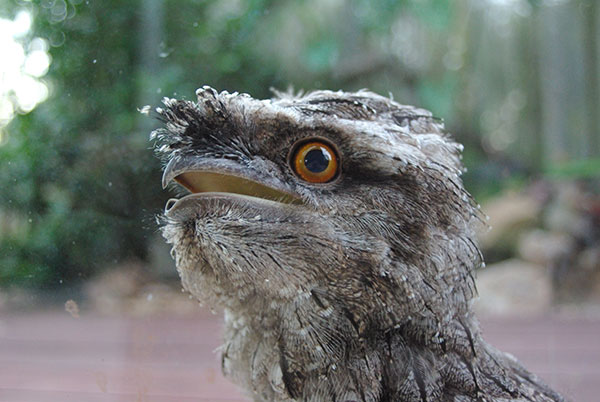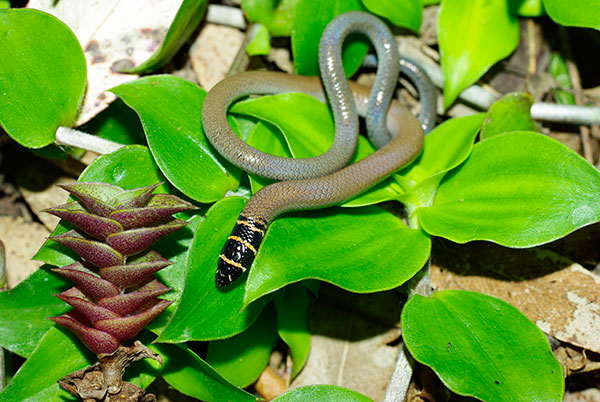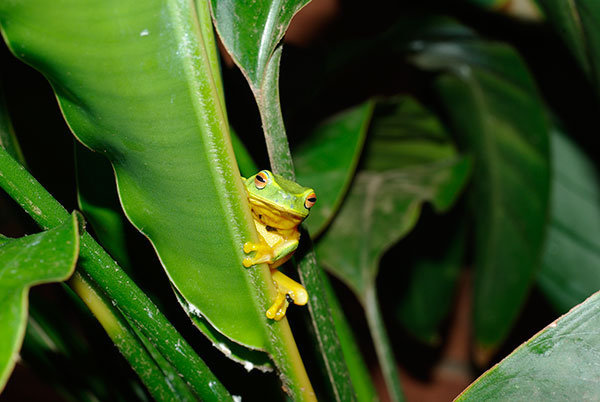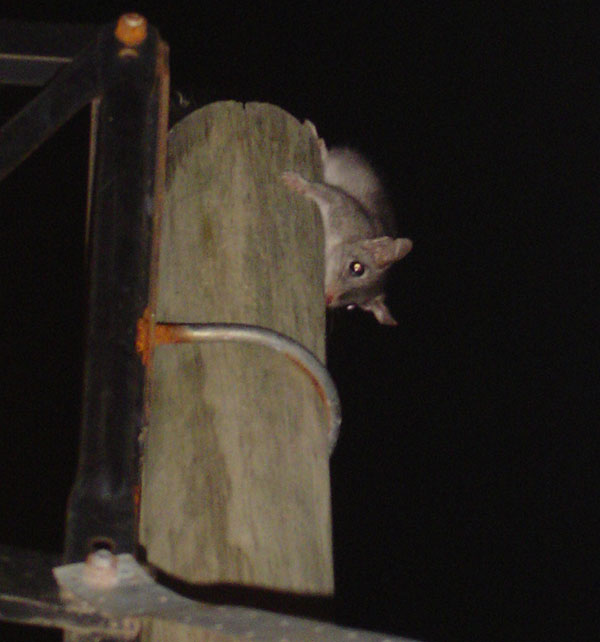Header: Lloyd’s Mock Olive in flower.
Our 2.5 acres of paradise in the western suburbs of Brisbane is a veritable biodiversity hotspot. Since purchasing the property in 2003 (or should I say, my wife said yes to the deal without me having even seen it – she knew I would love it), we have been continually awestruck by the amazing array of diversity it supports, which we are continually discovering.
We inherited a jewel as far as land care is concerned: the previous owners had embarked on a Lantana (Lantana camara) eradication programme, and we are greatly indebted to them for this. Our role has now been a maintenance one in keeping the Lantana at bay. As fantastic as the property is, as I am sure many Land for Wildlife members know, weeds are an ever present reality that need constant attention. In our opinion, Lantana is the easy one to keep in check. The real thorns in our side are the Creeping Lantana (Lantana montevidensis), Mother-of-millions (Bryophyllum delagoense), Asparagus Fern (Asparagus africanus) and Chinese Elm (Celtis sinensis). These are the more noxious of the 29-odd exotic species that occur on the property.
Yet in spite of this seemingly large array of nasties, there is an amazing diversity of native life in a place only 19 km from the city centre.
A diversity of plants
The property is mostly covered by Spotted Gum (Corymbia citriodora) and Narrow- leaved Ironbark (Eucalyptus crebra) forest on the high ground. The northern border is formed by a reach of Kholo Creek. Vegetation along this creek is dominated by Weeping Bottlebrush (Melaleuca viminalis), River She-oak (Casuarina cunninghamiana) and Water Gum (Tristaniopsis laurina).
To date, with the help of Brisbane City Council, we have identified 169 species of native plants on the property, representing 59 families. Included in these are the vulnerable Lloyd’s Mock Olive (Notelaea lloydii) and the Wild Jack Bean (Canavalia papuana), a species restricted to the Ipswich area and surrounds. We have identified 68 individuals of Lloyd’s Mock Olive on the property, quite a nice population, we believe.
Aquatic diversity
When it comes to the wildlife on the property, we are constantly nding new surprises. Take Kholo Creek for example, even during the severest of the drought there was always water in the deep pools. During those hot, dry days, these pools were an oasis for all wildlife.
We have identified ten fish species living in these pools; yet we are sure there are many more, if we look harder. Our favourites are the tiny Dwarf Flathead Gudgeon and the Crimson-spotted Rainbow sh. At night the waters really come alive: be it migrating Long- finned Eels, or the seemingly millions of eyes reflected back in the torch-light, which belong to innumerable Long-arm Shrimp and Glass Shrimps. Now where are those Platypus?
These pools also support healthy populations of Broad-shelled River Turtle, Eastern Long-necked Turtle, Short-necked Turtle and Saw-shelled Turtle.
On the land and in the trees
Although Kholo Creek offers fantastic aquatic habitat, most of the frogs we encounter are a long way from the creek. Of the ten native frogs we regularly encounter, the Graceful Treefrog (Litoria gracilenta) is by far our favourite. Our other favourites are the tiny Brood Frogs (Pseudophryne spp.).
Within the reptile world on the property, there are some real treasures amongst the 32 species we have encountered to date. The Collared Delma (Delma torquata) is a small creature that can easily be over-looked. This vulnerable species is a reasonably common resident around the garden.
On the bird side of things, the resident Grey Goshawk occasionally makes an appearance in the skies above. Generally, however, the diversity of birds in the area is not as high as we would have expected, with a dominance of larger species, like the Tawny Frogmouths who regularly present us with their young. Over the last six or so years we have noticed a sharp decline in the diversity and numbers of the smaller bird species, and a dramatic increase in the number of Noisy Miners.

A fledgling Tawny Frogmouth

Collared Delma, the jewel in the crown.

The magnificent Graceful Treefrog

A Brush-tailed Phascogale, not the easiest of creatures to photograph in the wild.
Article and photographs by Mervyn Mason Land for Wildlife member Mount Crosby, Brisbane
